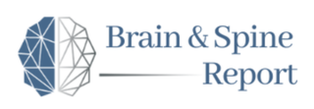|
An open letter about virtual residency interviews. With Covid-19 having affected many different aspects of the 2020-2021 residency process, students and programs must prepare for an entirely new format of “the trail.” The three to four month interview cycle is typically filled with dinners, long drives and flights, and new friends. In light of the new format for residency interviews, applicants must now learn about programs via virtual interviews, and vice versa. While we have already covered some of the pros and cons of the virtual interview process, we feel there are certain integral aspects of the interview day that must be preserved despite the change in format. The following are some ideas and suggestions we hope may be beneficial to both students and programs alike. Interview Dinners The dinners allow for a laid-back opportunity to speak with residents about their program, meet and catch up with co-applicants, and get a better sense of the city they could be living in for seven years. These dinners are just as important as the interview day in many cases, as the dinner allows for a better understanding of whether an applicant and the residents could work well together. In light of this, we propose having a video call the night prior to the interview day that entails small groups of one to two residents with four to six applicants. Residents would rotate between different groups so as to allow for students to meet at least two to three residents in the program. While this will not replace the personable experience of meeting residents at the dinner, this could act as a low-stress introduction to some of the individuals in the program prior to the interview day. Program Presentations These are incredibly important on interview days, especially now given students will not be able to see programs in person. We suggest sending out pre-interview day questionnaires to gather students’ questions. This should not replace a live Q&A session following the presentation, but rather may streamline the presentation so that the Q&A session is not confusing among all the participants online. Campus / City / Hospital Tours Facility tours give applicants a better sense of the environment they will be working in for seven years. Furthermore, seeing the city and some of its attractions further helps applicants gain an appreciation for the city and program. To emulate this experience, prerecorded tours of the hospital, campus, and some of the city attractions might be of benefit for interviewees. A high quality and well-produced video could help capture these aspects and will be paramount. These videos should also include testimonials from residents and faculty. This can then be followed with a live Q&A session if applicants have more questions that were not addressed in the video. Interview Structure Much thought has to be given to how the actual interviews will be formatted and scheduled. Several possibilities exist and we foresee that the format will likely vary from institution to institution. Traditionally, applicants rotated between rooms for one-on-one interviews with each faculty member and sometimes residents. The schedule typically included multiple back-to-back 15-20 minute interviews. The number of interviews generally ranged from 6-10 but sometimes as many as 20. This year- applicants and interviewers will likely rotate between “Zoom interview rooms." Organizing these virtual interview rooms will likely present new challenges. The possibility of interviews with a panel of faculty, instead of one-on-one, may be logistically easier. Alternatively, each applicant could have their own "Zoom room" with faculty rotating between different applicants. This may help interviews stay on schedule and maintain privacy. In conclusion, these are only a sampling of suggestions we think are important during this year’s virtual interview cycle. Many of these are aimed at helping programs and applicants become more familiar with each other, but also to streamline the process and minimize hiccups that are inevitable with virtual encounters. We commend all programs and students on their willingness to adapt to the current circumstances brought upon by Covid-19, and we look forward to seeing how the upcoming cycle unfolds! AuthorKarim Hafazalla, MD Brain & Spine Report is a product of the Brain and Spine Group, Inc. and the statements made in this publication are the authors’ and do not imply endorsement by any other group. The material on this site is for informational purposes only and is not medical advice. Unauthorized reproduction is prohibited. Categories All Comments are closed.
|
Categories
All
Archives
October 2023
|





6/11/2020